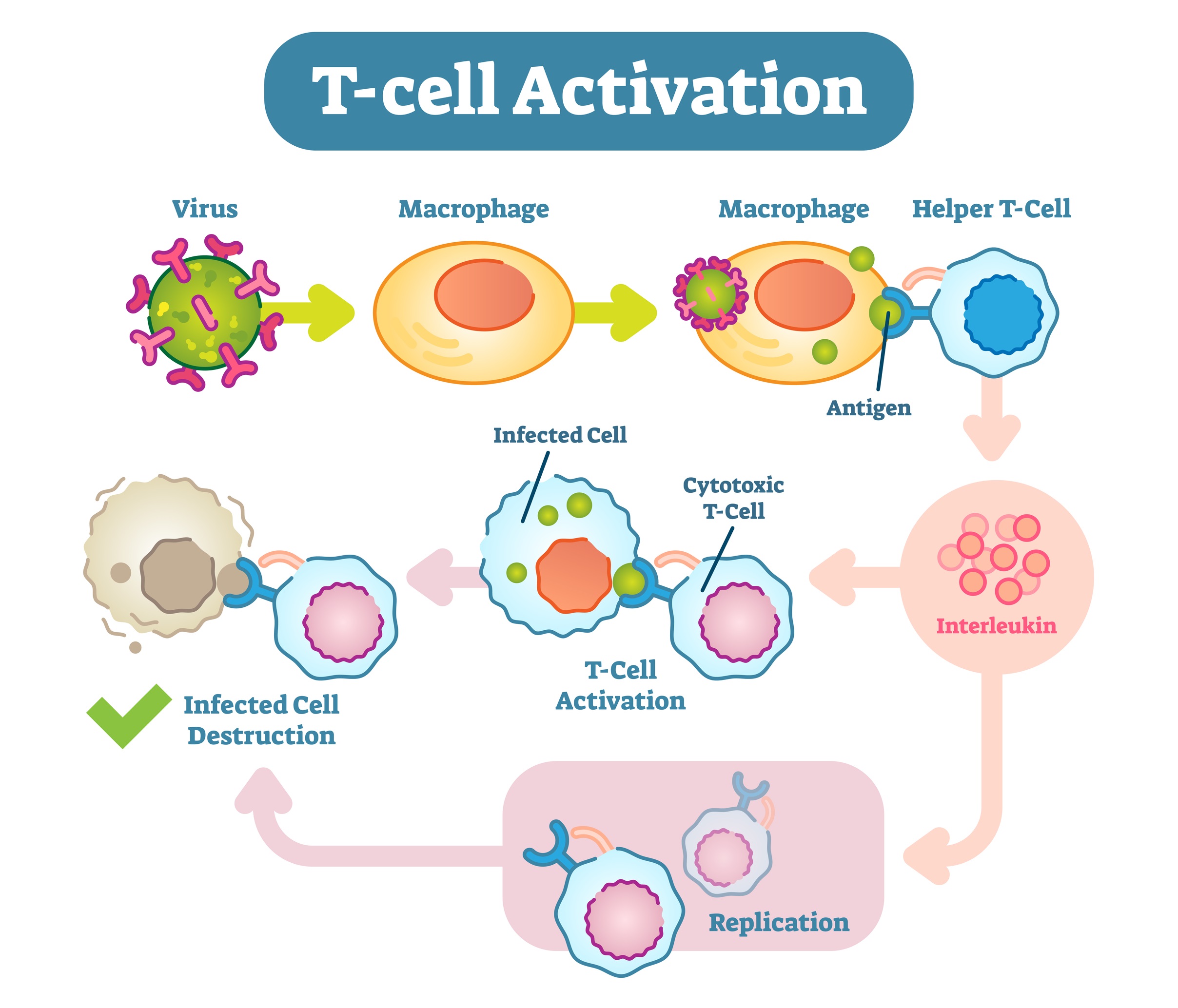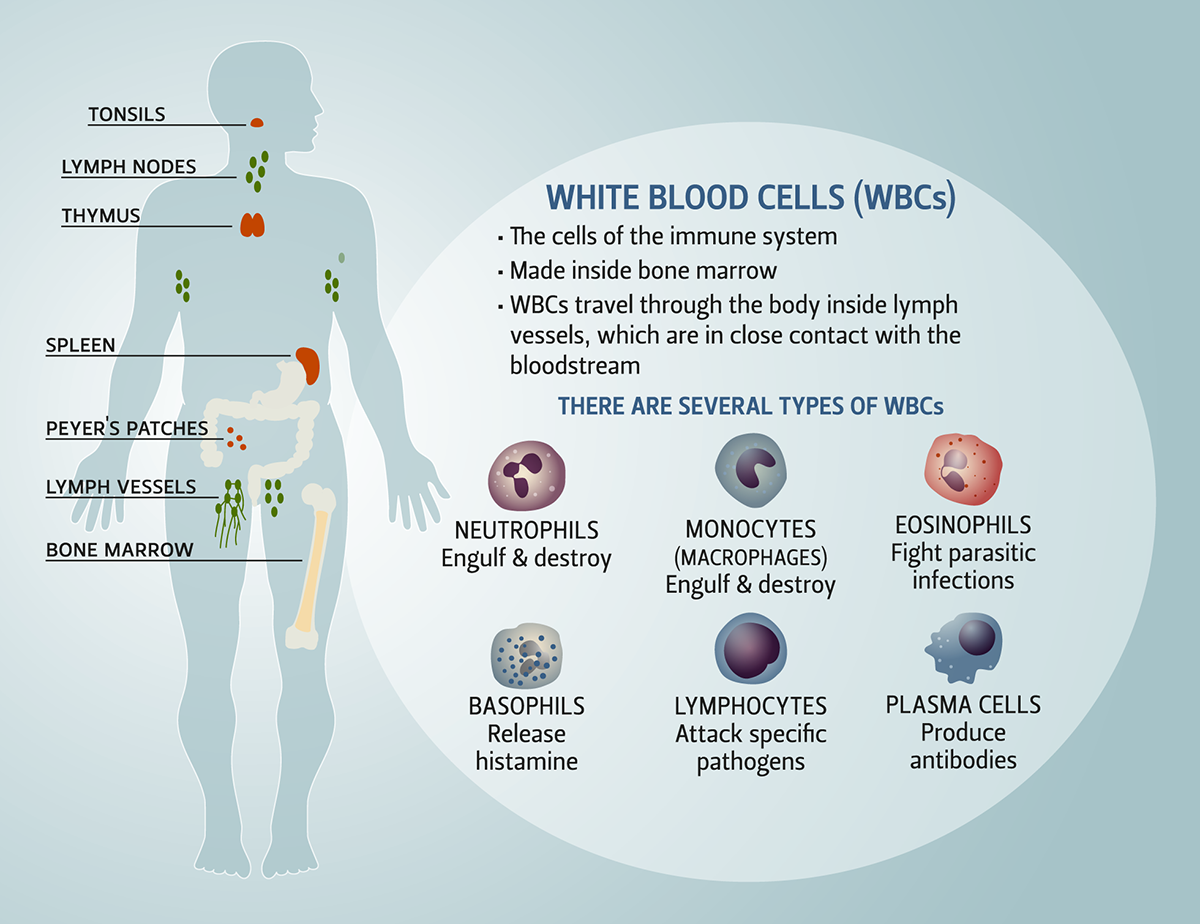

B-lymphocytes are synthesized and mature in the bone marrow from the hematopoietic stem cells, and after which they mature, migrate, and express themselves by forming unique antigen-binding receptors on their membranes, known as B-cell receptors or antibodies.They are the specialized cells of the immune system whose major function is to produce antibodies also known as immunoglobulins or gamma globulins.B-lymphocytes are also known as B-cells and on lab reports, they are known as CD19 or CD20 cells.The lymphocytes are broadly divided into three populations based on their functions and cell-membrane components i.e: 1. These lymphocytes circulate continuously in the blood and the lymph hence they are able to migrate into the body tissue spaces and lymphoid organs, therefore integrating the immune system to a high degree. There are about 10 11 lymphocytes in the human body. The lymphocytes make up 20%–40% of the body’s white blood cells and 99% of the cells in the lymph. Other major proteins of the immune system include antibodies produced by B-lymphocytes, and complement proteins (activated by antibodies). Some white blood cells secrete protein molecules known as cytokines which are immunoregulators (regulate the immune responses). All the other cells play additional roles in adaptive immunity such as activation of lymphocytes, increasing the effector mechanisms of antigen clearance by phagocytosis, or secreting various immune-effector molecules. In all these categories, only the lymphocytes have the characteristics of diversity, specificity, memory, and self/nonself recognition, which are the hallmark features of the adaptive immune responses. Under the White Blood Cells group of cells, they can be categorized into lymphocytes, (including T-lymphocytes, B-lymphocytes, and Natural Killers cells), neutrophils, monocytes, and macrophages. White blood cells provide the defense mechanisms of the body fighting off foreign elements (antigens) from the body. Nevertheless, white blood cells are an assemblage of different immune cells.

In the blood and the lymph and populating the lymphoid organs are various types of white blood cells (leukocytes) that play a key role in the body’s immune responses, therefore defining the cells of the immune system. They are also the site for lymphocyte interaction with the antigens.Īll these organs are connected by the lymphatic system and the blood vessels into a functional unit. Secondary lymphoid organs whose function includes trapping antigens from the tissues, and the vascular spaces.Primary lymphoid organs provide a development and maturation site for lymphocytes, and.The immune organs are categorized based on their functions and there are two main categories, which include: The cell types involved in the innate immune response are phagocytic cells: neutrophils, macrophages, natural killer cells, basophils, and others.Īs a leader in antibody development, CST has developed a wide array of highly effective antibodies against proteins involved in innate immunity such as the STING, NFκB, and inflammasome signaling pathways.The immune system is made up of different immune organs and tissues located all over the body. It provides a quick response to pathogens by many mechanisms, including cytokine production and complement activation. The innate immune response is your first line of defense against pathogens. The immune system is comprised of two broad cellular responses: CST is proud to produce top of the line antibodies for investigating proteins within the complex signaling pathways of the immune system and to contribute to the international movement to develop better, more efficacious therapeutics. You need tools to identify and analyze immune cells and immune signaling to advance your research. Immunology-based research focuses on the components of the human immune system and the possibility of their use to combat various diseases. CST supports your immunology research with the highest quality antibodies.


 0 kommentar(er)
0 kommentar(er)
